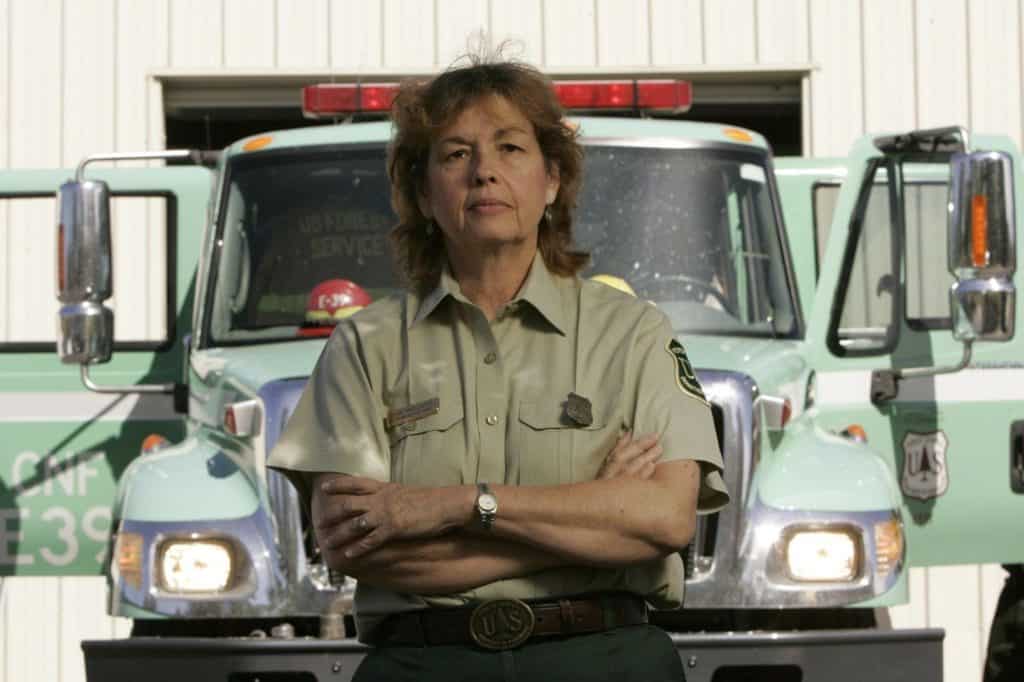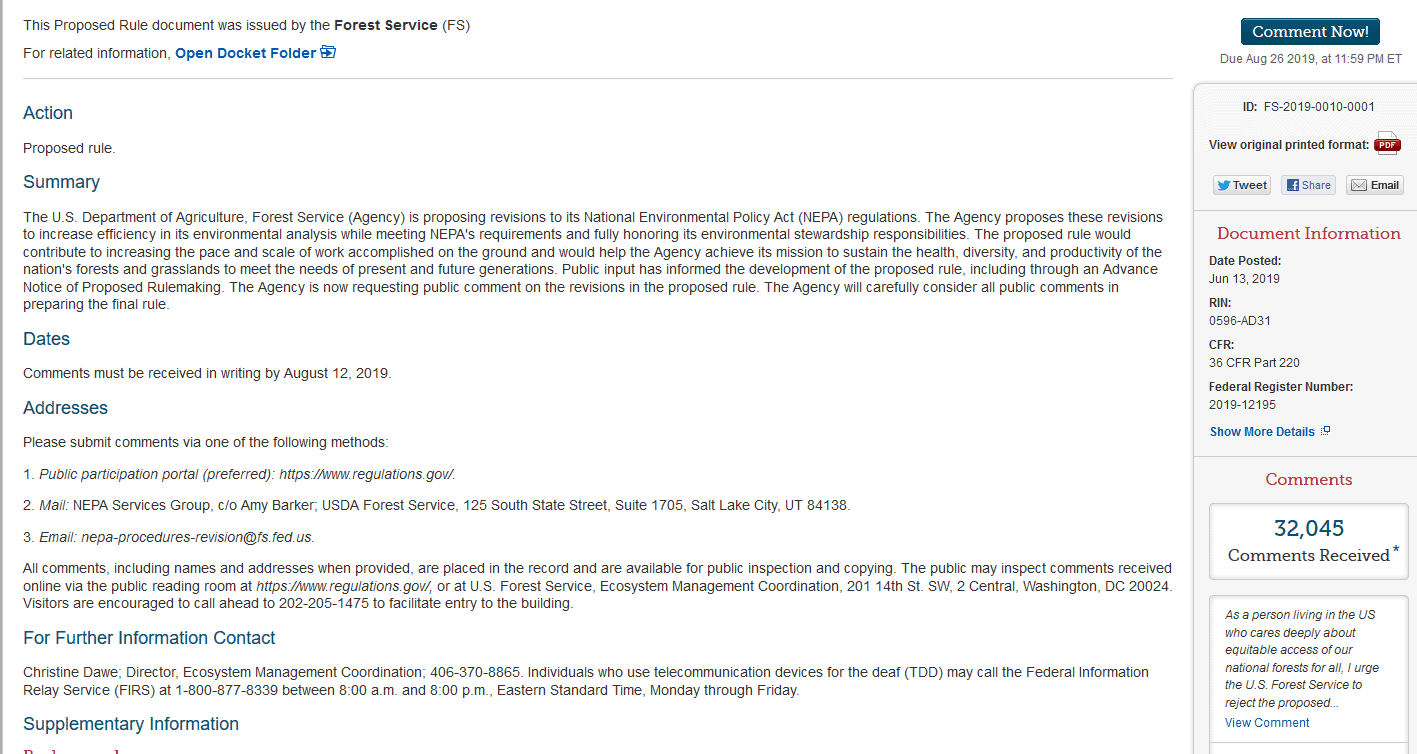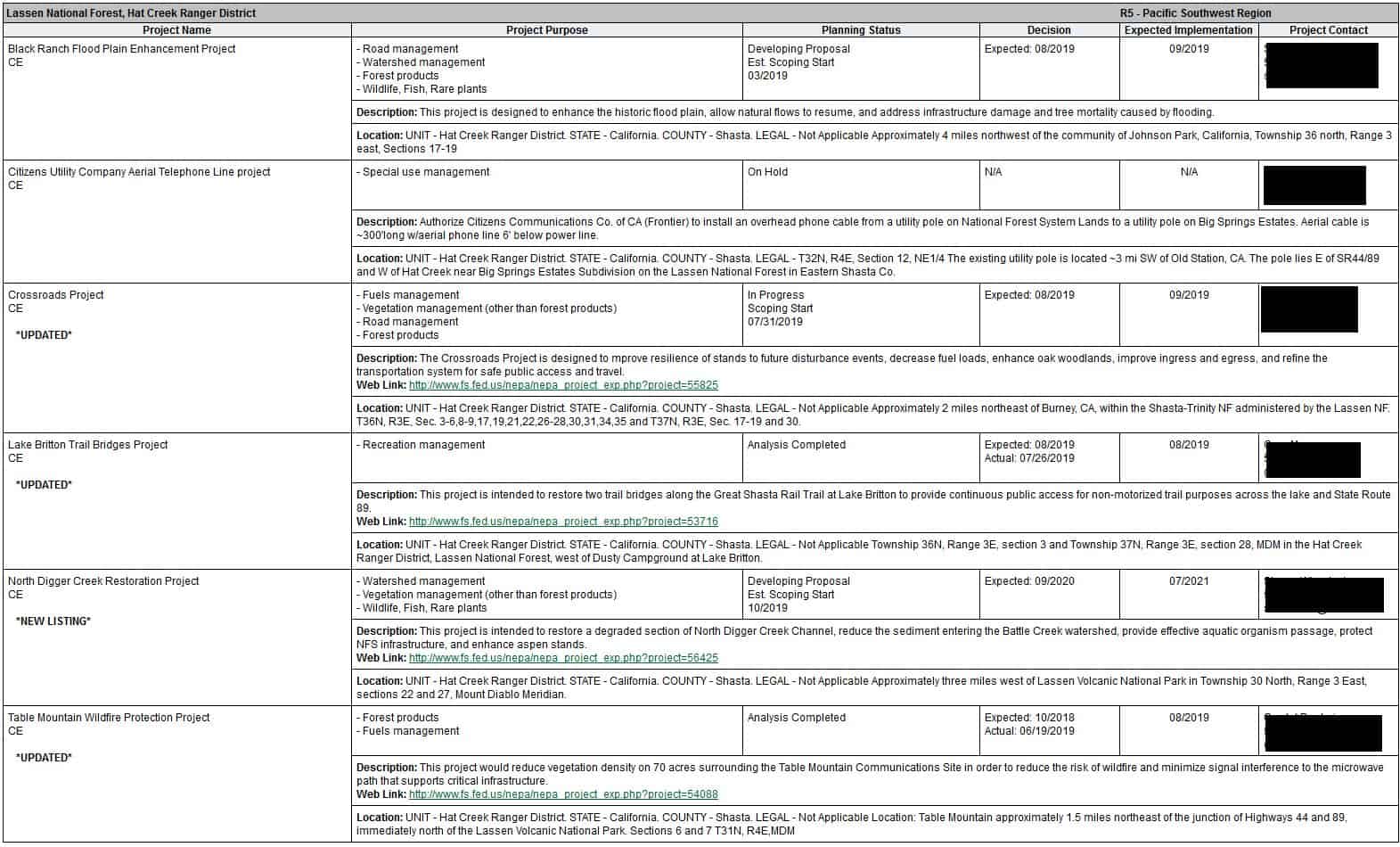The Forest Service is now providing these short overviews in their cover email, which serve the same purpose as the summaries I have been providing here, so I’m just going to copy them and add the links to the relevant documents.
Forest Service Summaries: 2019_08_21_Litigation Weekly_Email
Court Decisions:
Timber & Minerals | Region 6
Animal Legal Defense Fund v USA et al Region 6
Animal Legal Defense Fund, et al. v USA, et al. (18-1860, D.OR.) Region 6—On July 31, 2019 the District Court of Oregon issued an opinion and order in favor of the United States in which the Department of Agriculture is a party concerning commercial logging and mineral extraction contribution to climate change. This is the second climate change case that was filed after the Juliana v. United States (15-1517, D. OR., 18-36082, 9th Cir.). The Federal Government urged the district court to restrain “from dictating environmental policy by creating a “right to wilderness” and argued that the plaintiffs lacked standing to bring such a broad claim.”
Litigation Update:
Nothing to report
New Cases:
Recreation | Region 4
Sawtooth Mountain Ranch v USFS_Region 4
Sawtooth Mountain Ranch LLC et al. v. United States Forest Service et al. (19-00118, D. Idaho) Region 4— On August 8, 2019, plaintiffs filed an amended complaint in the District Court of Idaho against the Forest Service concerning plans to construct the Redfish to Stanley Trail (Trail) on the Sawtooth National Recreation Area (Sawtooth National Forest).
Notice of Intent:
Wildlife | Region 1
NOI Neighbors Against Bison Slaughter_Region 1
NOI (dated August 16, 2019 and received August 20, 2019) by Neighbors Against Bison Slaughter (NABS) alleging the Forest Service and National Park Service (NPS) violated the Yellowstone National Park Act (YNPA), National Forest Management Act (NFMA), Multiple-Use Sustained Yield Act (MUSYA), National Environmental Policy Act (NEPA), and Interagency Bison Management Plan (IBMP) by not imposing reasonable restrictions on the migrating and hunting of wild bison in Beattie Gulch on the Custer-Gallatin National Forest (CGNF) — Region 1.
Natural Resource Management Decisions Involving Other Agencies:
Pipeline | Region 8 & 9
Wild Virginia et al v USDOI Region 8_9
Wild Virginia, et al. v. U.S. Department of Interior, et al. (19-1866, 4th Cir.)-Region 8 and 9—On August 12, 2019 the petitioners filed a request for appeal with the 4th Circuit Court of Appeals concerning the Mountain Valley Pipeline on the Monongahela, George Washington and Jefferson National Forests. The petitioners are appealing pursuant to the Administrative Procedures Act, 5 U.S.C. 702, Section 19(d)(1) of the Natural gas Act to review the U.S Fish and Wildlife Service’s Biological Opinion (BO) and Incidental Take Statement (ITS) dated November 21, 2017 for the Mountain Valley Pipeline.
Mining | Region 1
Nez Perce Tribe v Midas Gold Corp Region 1
Nez Perce Tribe v. Midas Gold Corp, et al (19-307, D. Idaho)-Region 1— On August 8, 2019 the plaintiff filed a complaint in the District Court of Idaho against the defendants (Midas Gold Corp., Midas Gold Idaho, Inc., Idaho Gold Resources Company, LLC, and Stibnite Gold Company) concerning the Stibnite Gold Project on the Payette National Forest. Plaintiff’s complaint alleges violations under the citizen enforcement provision of the Federal Water Pollution Control Act (Clean Water Act-CWA). An initial Notice of Intent was sent to the defendants on June 5, 2019
BLOGGER’S NOTE
WildEarthGuardians_v_Weber_19-56_amended_19-056_8-8-2019
An additional document was included with this summary, but was not summarized. It is an amended complaint filed on August 7 in WildEarth Guardians v. Weber, which is one of two lawsuits filed against the revised Flathead National Forest Plan. They have dropped their claims of violations of NFMA and the Planning Rule and added claims related to the Endangered Species Act.
BLOGGER’S BONUS
The Maryland-based Center for a Humane Economy filed a suit in King County Superior Court, to prevent the state of Washington from killing more wolves from a pack that is preying on cattle. The Lands Council, a Spokane-based conservation group, said it may be time to move the cattle off of the Colville National Forest. (However, the Forest Service is not a defendant in the lawsuit.)




